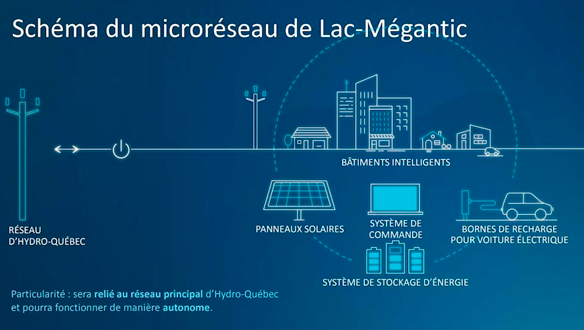Energy
Given the diversity of infrastructure and the regions served, adaptation measures aiming to make the energy sector more resilient to climate change can take different forms.
As a result of increased precipitation, dams will have to be adapted and some structures may have to be resized to adequately manage larger volumes of water. This increase may offer opportunities to produce additional energy provided that the necessary infrastructure is available (e.g. sufficient number of turbines).
Energy transmission infrastructure should be built while taking into account different types of impact. For example, power line monitoring and de-icing systems enhance the ability of transmission infrastructure to withstand icing episodes. Transmission towers built to survive powerful winds or installed outside flood-prone areas are other means of adapting transmission infrastructure. Designing power lines to better tolerate high temperatures and maintain their transmission capacity can help ensure the flow of electricity during periods of intense heat.
Climate-Informed Flood Design for Dam Construction and Maintenance
This project provides a blueprint for Canadian dam managers to include climate change information into flood design values, and proposes solutions to address major sources of uncertainties. It offers a decision-making framework to assess and select adaptation options, mindful of dam managers’ operational context.
Quebec’s energy resilience can also take the form of reduced demand. Measures that lower the need for air conditioning such as reducing urban heat islands, designing energy-efficient buildings and, more broadly speaking, implementing energy efficiency measures can all help curb demand during periods of particularly high energy intensity. Small-scale energy production, smart grids and a diversification of energy sources can also help reduce reliance on the hydro-dominated grid in the event of disturbances.
A number of climate indicators dealing with air conditioning and heating of buildings are available on:
A microgrid was installed in Lac-Mégantic as part of the effort to rebuild the downtown area (Figure 1). It contains electricity-producing solar panels as well as energy storage and distribution devices. Electricity can therefore be generated locally and managed as needed, without depending on remote energy sources in the province’s North. This type of grid therefore reduces the risks associated with energy transmission, which enhances local resilience.
Adaptation Case Studies in the Energy Sector: Overcoming Barriers to Adaptation
These documented case studies will help to disseminate and transfer information, engage decision makers and better recognize barriers to adaptation within the energy sector in order to overcome them.
